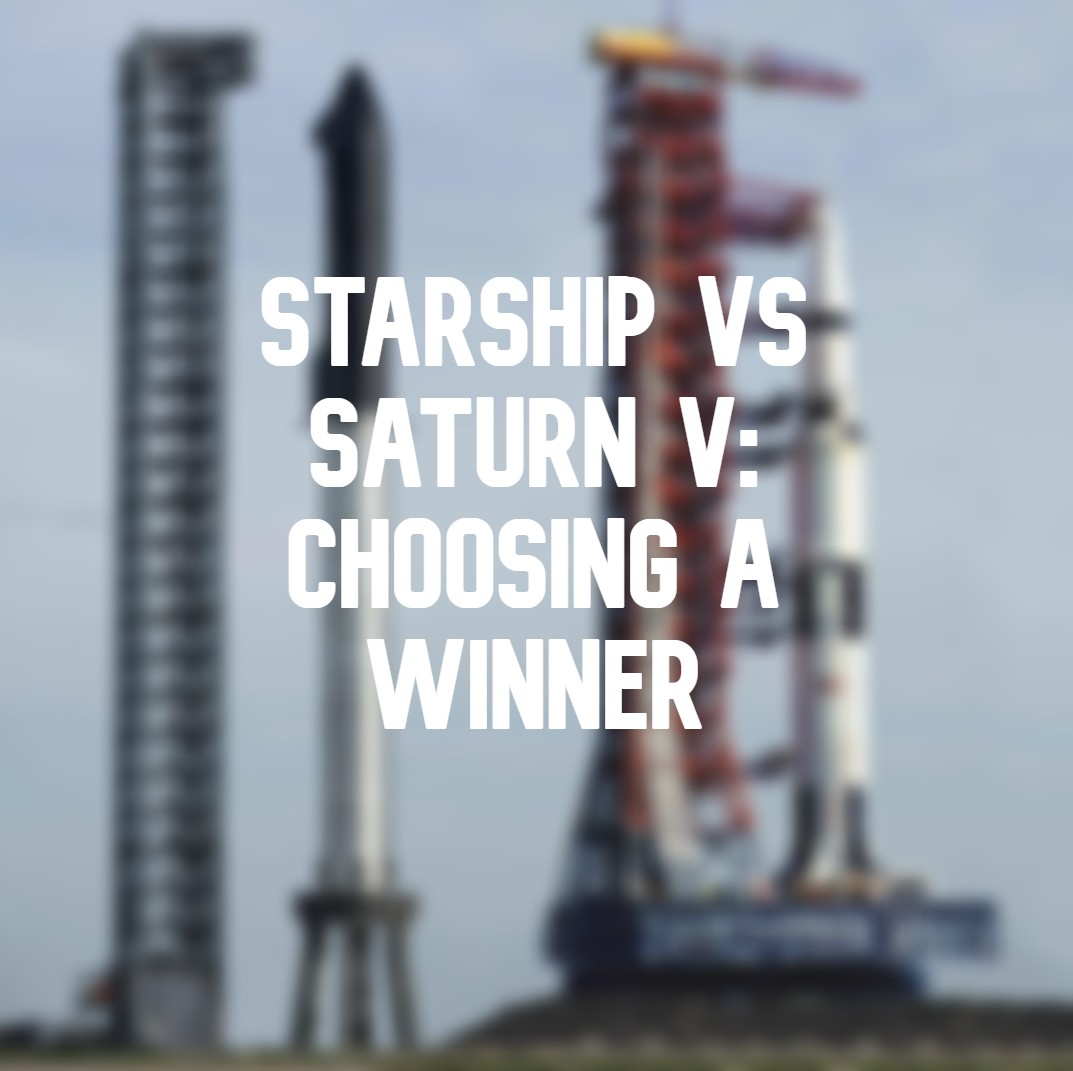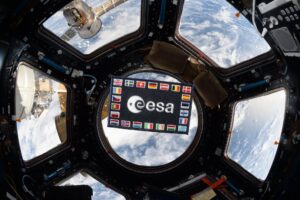Starship vs Saturn V: choosing a winner
5th Sep 2022
Sixty years ago, to get to the Moon, NASA built the most powerful rocket in the history of space exploration — Saturn V. It never failed and honourably fulfilled its main mission — helping the United States win the Space Race. In 1972, flights to the Moon ceased, and the Saturn V became redundant. The rocket launch had a record high cost, and it was economically unviable to use it for conventional orbital missions. Today, when humanity intends not only to return to the Moon but to colonize it and use it as a launch pad for Mars flights, we need cheaper and more versatile methods of delivery. Elon Musk’s SpaceX is building a Starship ready to take on these challenges. Will it beat the legendary lunar rocket, or will it be an inferior model? Let’s compare Starship vs Saturn V and choose the best rocket.
Starship vs Saturn V specs comparison
| Specs | Saturn V | Starship |
| Height | 110,6 m | 120 m |
| Diameter | 10,1 m | 9 m |
| Dry Mass | 187 566 kg | 300 000 kg |
| Stages | 3 | 2 |
Engines | 1 Stage — 5 Rocketdyne F-1 (RP1/LOX) 2 stage — 5 Rocketdyne J-2 (LH1/LOX) 3 stage — 1 Rocketdyne J-2 (LH1/LOX) | Super Heavy booster — 33 SpaceX Raptor-2 (CH4/LOX) Starship spacecraft — 3 Raptor-2, 3 Raptor Vacuum (CH4/LOX) |
| Propellent capacity | 1 Stage — 1 970 000 litres 2 Stage — 1 287 000 litres 3 Stage — 326 030 litres | Super Heavy — 3 400 000 litres Starship spacecraft — 1 200 000 litres |
| Payload capacity | 140 000 kg — to LEO 43 500 kg to Trans-Lunar Injection | 100 000 — 150 000 kg orbit dependent |
| Development cost | $50 billion (in 2020) | $5 billion |
| Reusability | No | Fully reusable |
| Launches | 13 | 0 |
Saturn V: how did it work
Developed 60 years ago, Saturn V has a storeyed launch history. From 1967 to 1973, it made twelve Apollo launches and delivered the first American space station, Skylab, to LEO. In the Apollo missions, the rocket used a three-stage version with a three-seat manned Apollo spacecraft, and in the Skylab mission, a two-stage modification, where the Skylab orbital workshop took the place of the third stage. At launch, the five first-stage engines developed 7.5 million pounds of thrust to lift the rocket off the launch pad and carry it to a height of 42 miles. After that, the first stage fired back and fell into the Atlantic Ocean. The second stage worked for 9 minutes and 9 seconds, after which it was also discarded, and the single third-stage engine was turned on. It burned for 11 minutes and 39 seconds to gain enough speed to reach near-Earth orbit. Approximately two and a half hours later, the third-stage engine fired up again to launch the Apollo spacecraft from Earth’s orbit to the Moon. After Apollo docked with the lunar lander, the third stage was disconnected and either went on an eternal drift through the expanses of space or received a command to make an emergency landing on the lunar surface.
The main differences between Starship compared to Saturn V
Starship is not fundamentally different in composition from NASA’s classics. This is also a multi-stage vertical launch system, but with more features. SpaceX Starship will be able not only to deliver astronauts to the Moon and back but also to fly to Mars and other planets of the solar system, while the ultimate goal of Saturn V was to put the Apollo spacecraft on a trans-lunar trajectory.
The role of the Saturn V in the case of Starship is played by a Super Heavy booster, while the role of Apollo is played by Starship Spacecraft. At the same time, both will be reusable with the possibility of a controlled jet landing. The spacecraft itself will be available in four versions: Starship Crew, Cargo, Tanker, and Lunar Lander.
Saturn V vs Starship: size
The Starship Crew will contain 1,100 m3 of pressurized space with crew quarters for 100, common areas, warehouses, a kitchen, and a solar flare shelter for the crew. The Starship Tanker will be able to repeatedly refuel the ship in orbit, and the Lunar lander will be able to transport crew and cargo from Earth orbit to the Gateway lunar station, land on the lunar surface and return to the station. Saturn V can only be compared directly vs Starship Cargo, but even here, the possibilities of the latter are much higher. It will be able to fly far beyond Earth’s orbit, landing and taking off from the Moon and other planets.
The only downside to Starship vs Saturn V is that it hasn’t flown anywhere yet. But SpaceX is actively testing its brainchild and promises the first commercial mission as soon as next year. Now let’s look at the differences between the two systems in more detail, based on the data from the comparison table above.
Is Starship bigger than Saturn V?
They are almost the same. Starship is 10 m taller but 1 m smaller in diameter. On the other hand, standing taller, Starship accommodates a payload module with a height of 18 meters and a volume of 1100 cubic meters, which can accommodate both crew and cargo. And this is the largest useful volume among all former, present and currently-developed space installations.
Is Starship heavier than Saturn V?
The Starship is heavier than the Saturn V by over 100 tons in dry weight, excluding fuel. However, this parameter calls for clarification. The Starship’s total mass includes the Super Heavy Booster and Spacecraft without payload, while with the Saturn V we are looking at the net mass of the rocket without the Apollo spacecraft. But even taking into account Apollo’s weight (44 tons), the Starship is still significantly heavier.
How much more powerful is Starship than Saturn V?
Here, we only need to compare Starship Super Heavy vs Saturn V. For the Booster to deliver 220 tons to LEO, which is exactly how much a 50-meter steel Starship spacecraft loaded to its capacity weighs, it was equipped with 33 Raptor 2 engines with a total thrust of 75,315 kN. The largest payload Saturn V carried to LEO was the 90-ton space station Skylab. For this, ten engines with a total thrust of 40,000 kN sufficed. That is, the Starship booster is almost twice as powerful as the entire Saturn V rocket.
Starship vs Saturn V: eco-friendliness
Both carriers use liquid chemical propellants, the most common in rocket launchers due to their relative affordability and high specific impulse. Starship uses liquid methane, while the Saturn V ran on kerosene in the first stage and liquid hydrogen in the 2nd and 3rd stages. Liquid oxygen acts as the oxidizing agent in both cases.
Liquid methane is advantageous in terms of production cost and efficiency. A methane engine is 20% more efficient compared to a kerosene engine. Besides, methane can be mined on Mars, which means that the Starship will not need to carry fuel onboard to return to Earth. In terms of environmental friendliness, Starship and Saturn V are approximately the same. Methane is more environmentally friendly than kerosene, but more toxic than hydrogen. The amount of fuel burned in one launch is almost the same, too — and this amount is enormous. But let’s not forget that Saturn V is 60 years older than Starship! In other words, the green verdict is that the Saturn V is pretty green for its age, while the Starship is not green enough considering space industry technological advances made over the past decades.
However, we still have a few alternatives. Fuels based on ammonium perchlorate or heptyl are significantly inferior in safety parameters, and other rocket fuels have not been invented just yet. But science does not stand still, and many young aerospace companies promise to use green rocket fuels. For example, two “green” rockets are developed in Britain. Orbex Prime will run on BioLPG biopropane, which reduces carbon emissions by 90% compared to old-fashioned hydrocarbons. And Skyrora XL will use Ecosene, a type of kerosene obtained from the processing of plastic waste, thus clearing our planet of garbage.
Saturn V vs Starship: reusability
In this regard, Saturn V’s age plays against it. In the 1960s, people still had no hope for reusing rocket stages. Such an opportunity arose only in the early 80s, when NASA managed to develop reusable solid-propellant side boosters for its Space Shuttle. But the matter did not progress any further. SpaceX began testing the return of its first stage for reuse in 2013 and has greatly succeeded with this endeavour. To date, the company claims that Falcon 9 first stage can be reused from 5 to 10 times, which significantly reduces launch costs.
SpaceX plans to use similar technology with the Starship. Super Heavy will be able to make a controlled landing on a platform and, after minor repairs and refuelling, launch the payload into orbit again.
Starship vs Saturn V: costs
To date, Saturn V remains not only the most powerful but also the most expensive launch vehicle in the world. Fifty billion dollars was spent on its development (taking into account the devaluation of the USD today), and one launch cost 1.3 billion. According to Elon Musk, about $5 billion has been spent on the creation of the Starship as of now, and its launch will cost less than any rocket on the planet: about two million. And this is perhaps the last and most solid argument in favour of Starship compared to Saturn V.
Saturn V, although it has sunk into retirement, will forever remain in the history of space exploration as the first rocket that delivered people to the Moon. And it was worth it! And we wish for SpaceX Starship to make the same history — as the first ship to take people to Mars.






Thank you for your comment! It will be visible on the site after moderation.